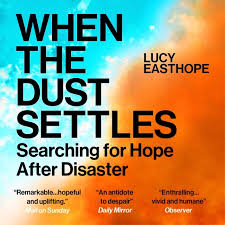The Weekly Reflektion 04/2025
When the dust has settled after a Major Disaster, a thorough investigation is instigated to find the direct and underlying causes. The investigation team will make relevant recommendations and measures will be implemented to prevent recurrence. Hopefully we will learn. The settling of the dust is also the start of the recovery process that should help the survivors to cope with their experience and the next of kin cope with their loss. The recovery process needs to be developed before the disaster, and experience from previous disasters needs to be included in the planning process. Failure in the recovery can make the tragedy even worse for the people affected.
What sort of disaster recovery process have you planned?

When we started Reflekt in 2017, our focus was learning from Major Accidents and our intention was to contribute to their prevention. Until recently we have not considered the recovery from a major disaster and how to ease the pain and suffering for the people affected.
Lucy Easthope’s book ‘When the Dust Settles, Searching for Hope after Disaster’, has given us an insight into this process and some of the pitfalls that await the unprepared organisation. Easthope has several examples of recovery from disasters, including the tsunami in December 2004, the Twin Towers terrorist attack in September 2001, and the Iraq war in 2003. Easthope also describes the process for the development of the science and practices of disaster victim identification (DVI). The driver here was Lord Justice Clark’s findings in his report on the handling of the deceased in the Marchioness disaster, published in 2001. The Marchioness disaster was the subject of our Reflektion in week 50/2024. On 20th August 1989 on the River Thames in London, the 1880-ton dredger Bowbelle collided with the 46-ton pleasure boat Marchioness. 51 people died and were recovered from the river. The handling of the bodies and mix up over hands removed as part of the identification process caused significant shock and distress for the families andundermined their trust in the systems in place to correctly identify the bodies.
Easthope describes many efforts made by organisations and people involved in the disaster response and recovery to dampen the shock of the death of loved ones. Application of make-up to hide extensive injuries, cleaning-up clothes and effects, e.g. pictures, to remove blood, removing letters that might suggest an affair or secrets on sexuality. Sometimes a story is presented that a death would have been quick, however later a film of the disaster would emerge showing the victim in considerable stress and obviously suffering. Some of the examples are good intentions that backfired, others are related to incompetence and inexperience in handling such situations. All the examples led to the undermining of trust between the people affected and the organisations involved. Once this trust is undermined then people begin to be suspicious of all information on the disaster and the seeds of conspiracy are sown.
On 13th June 2017, Easthope organised a conference on disaster recovery. The initiative for the conference had been an approach to her by the Church of England who were considering their role in a disaster. A scenario was developed to stimulate the discussion. A fire in a tower block with concerns over actions by local authorities and building enforcement agencies, and residents with diverse backgrounds. As fate would have it, at 00:54 on 14th June 2017, a fire broke out in flat 16 on the fourth floor of Grenfell Tower leading to 72 fatalities. The relevant organisations were poorly prepared for the recovery.
Easthope advocates scenario thinking in disaster recovery to prepare organisations and avoid the many pitfalls. We wholeheartedly agree.
